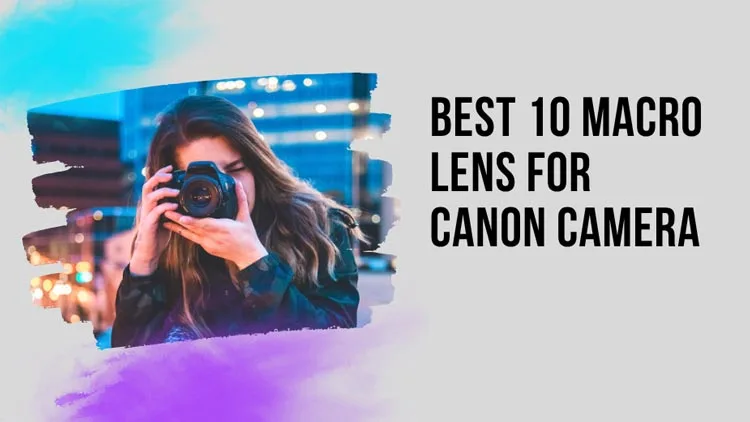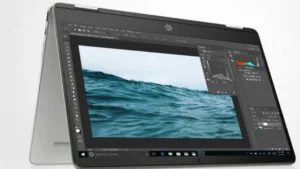When investing in a good camera, you should also get a macro lens. This special lens lets you take pictures of very small things up close. It makes the tiny details look big and sharp in your photos. Having a macro lens is important for people who like to take photos and for people who do photography for a job. Usually, cameras come with a normal lens. But you will need a macro lens for bugs and flower photos. And if you are a photographer, a macro lens can help you take more types of pictures.
Don’t worry, it will not cost too much money! A macro lens is not going to be a big cost for you. Canon, a big camera company for cameras, makes macro lenses that start at a good price. You can also get a cheaper price if you buy more things. So you should think a macro lens is a good thing to buy for your camera.
Let’s dive below for a detailed explanation!
1. RF 85mm F/2 Macro IS STM
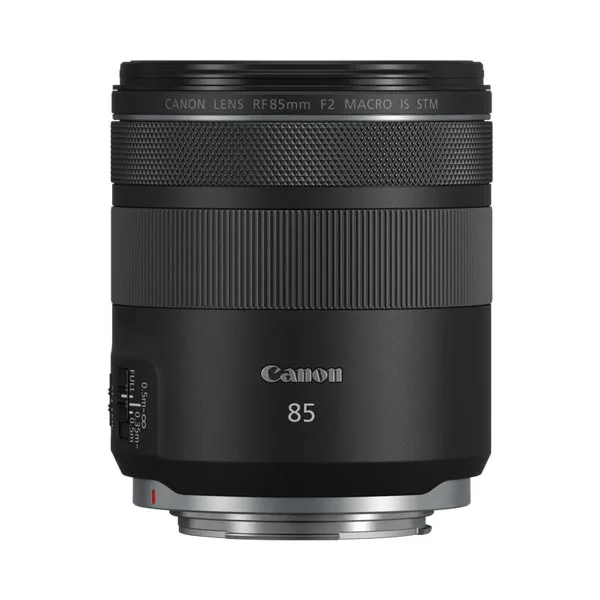
Price Starting at $689
The RF 85mm is a good lens to take pictures of people and also close-up things. It makes the person you take a picture of look very clear, and the background looks soft and blurry. This is good because it makes the person stand out. Usually, people use this lens for taking pictures of people’s faces. So you can use it for that and also for taking pictures of small things, like a bug on a leaf.
A sensor captures light. The focal length determines the field of view. The focusing distance affects sharpness. Mirrorless cameras are lightweight. Depth of field controls background blur.
Pros
- Excellent image sharpness
- Built-in Image Stabilization (IS)
- Relatively lightweight
- Versatile for portraits
Cons
- Autofocus (STM) is slower
- Maximum macro magnification is only 1:2 (half-life-size).
- Lacks weather sealing
- No lens hood included
Never took a picture of a bug before? That is okay. Using this lens for macro will be a fun time, and you will remember it when you see the pictures. You can take a picture of a butterfly on a flower. Or you can take a picture of water drops on a spider web; it will look very nice.
2. RF 35mm F/1.8 Macro IS STM
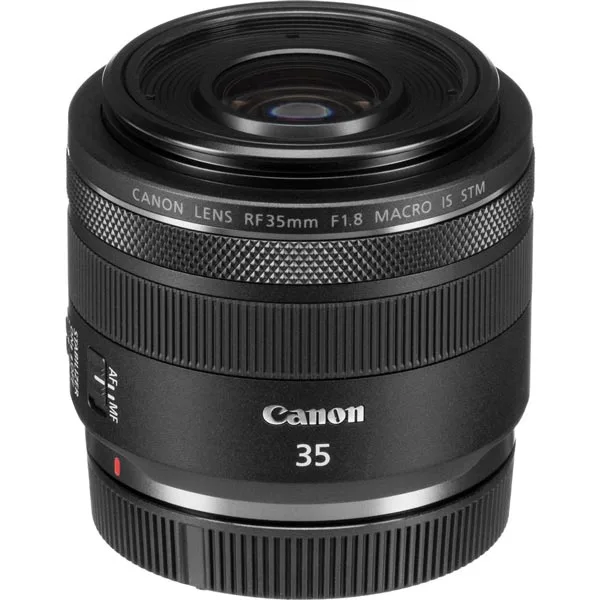
Price Starting at $499
You can use the RF 35mm to take pictures of many things because it is not too zoomed in. It is a wide lens, so you can take pictures of a big room and also take close-up pictures of a small toy. This is a lens you can use every day. If you like to walk in the city or in the park, this lens is easy to carry with you.
APS-C sensors capture detailed images. Spherical aberration affects image quality. Nikon cameras offer high performance. Extension tubes increase magnification. Resolution defines image clarity. Background blur enhances subject focus.
Pros
- Extremely small and lightweight.
- Excellent sharpness at f/1.8.
- Versatile wide-angle and macro lens.
- Hybrid Stabilization aids close-ups.
Cons
- Noticeable barrel distortion.
- Visible vignetting.
- No weather sealing.
- Noisy STM motor.
- No included lens hood.
Don’t have a lot of money for many lenses? No problem. This one lens can do many things for you. You can take a picture of your friend in the street and then take a close-up picture of a cool design on a wall. It is a very useful lens to have.
When you take pictures with this lens, you should get close to the thing you are taking a picture of. It can focus very closely. This means you can take a picture of the eye of an insect or the lines on a leaf. The pictures will have a lot of details. You can also take pictures of food and make it look very big and yummy. It is a fun lens for people who like to see the small parts of things.
3. RF 24mm F/1.8 Macro IS STM
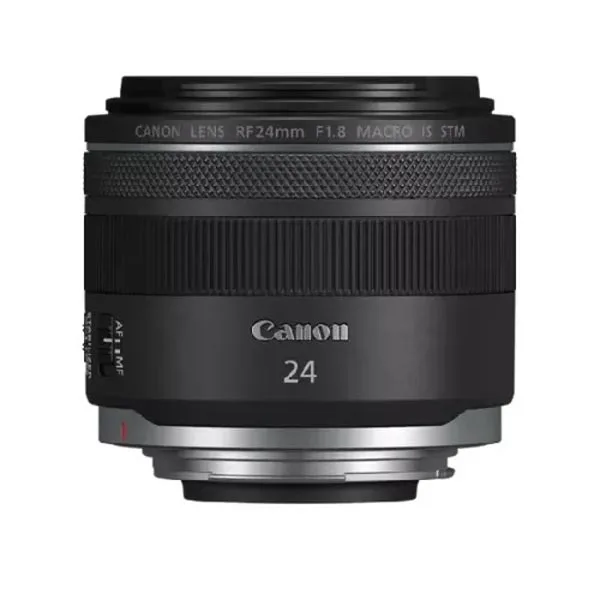
Price Starting at $640
A wide-angle lens like the Rf 24mm is the best for taking pictures of big places and also small things inside that place. It lets you see a lot in the picture, like the whole forest, and also a small mushroom on the ground. The wide view makes you feel like you are really there. Usually, people use wide lenses for taking pictures of buildings and inside rooms.
Micro Four Thirds sensors provide compact designs. Sony cameras deliver excellent image quality. Minimum focus distance determines close-up sharpness. The reproduction ratio measures the magnification ability. Extenders increase focal length. Chromatic aberration causes color fringing.
Pros
- Unique 24mm wide-angle.
- 1:2 macro capability.
- Fast f/1.8 aperture.
- Compact and lightweight.
- Built-in 5-stop Image Stabilization.
Cons
- Significant corner softness at f/1.8.
- Heavy reliance on digital correction.
- No weather sealing.
- Autofocus motor hums.
You should move around a lot to find the best angle for your picture. Getting down low on the ground can make a small flower look very big and important in the big field. Or you can hold the camera high up to show the small thing and the big sky. This lens makes pictures look very interesting and different from normal pictures. It is good for people who like to be creative.
4. Canon EF-M 28mm Macro IS STM
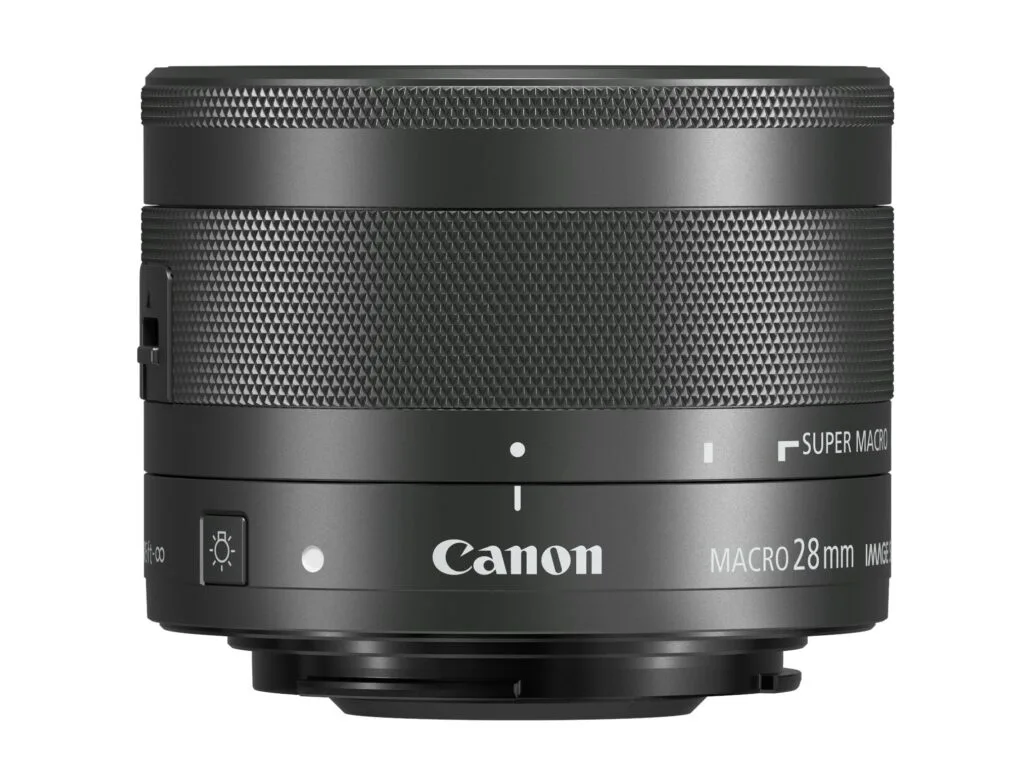
Price Starting at $400
The Canon EF-M 28mm is a small and not heavy lens. It is very good for cameras that are small, like the Canon M series cameras. You can carry it in your pocket easily and take it out to take pictures anytime you see something cool. This is a macro lens, so you can take close-up pictures of small things you find on your walk. Like a pretty rock or a button on your shirt.
Shutter speeds control motion blur. MP-E 65mm lens offers extreme macro magnification. f/16 aperture provides deep depth of field. Minimum focusing distance affects close-up shots. Fujifilm cameras excel in color accuracy.
Pros
- Built-in Macro Lite LED.
- 1.2x Super Macro magnification.
- Extremely small and lightweight.
- Effective Hybrid Image Stabilization.
Cons
- EF-M mount limits compatibility.
- Small f/3.5 maximum aperture.
- Plastic lens mount.
- Short working distance casts shadows.
Know More: Canon EF 24-70mm lens provides versatile zoom. The Canon EF 70-200mm f/4 L USM lens is great for telephoto shots. Canon EF 85mm f/1.8 USM lens captures sharp portraits. RF 15-35mm f/2.8 L IS USM lens offers wide-angle flexibility. f/2.8 aperture allows excellent low-light performance.
Don’t have a big camera? That is fine. This lens is for small cameras, and it is not a big cost. It is a good first macro lens for someone who is new to taking pictures. The pictures you take with it will be clear, and you will be happy with them.
5. Canon RF 70-200mm F2.8L IS USM
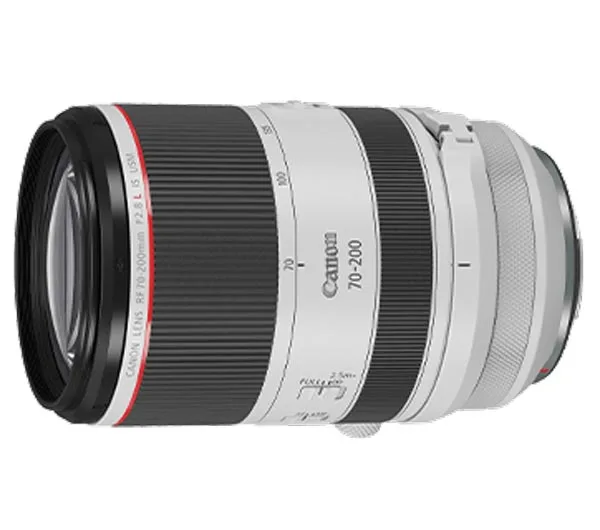
Price Starting at $2699
The Canon RF 70-200mm is a big lens that can zoom in very far. It is good for taking pictures of things that are far away, like a bird in a tree. But it is also good for macro because you can stand far away from a small thing and still take a close-up picture of it. This is good for taking pictures of insects that will fly away if you get too close.
Focus stacking improves depth of field. Prime lens offers sharp image quality. Diffraction reduces sharpness at small apertures. Compact size enhances portability. The autofocus system ensures quick subject tracking. Aperture blades control background blur.
Pros
- Phenomenal L-series sharpness.
- Shorter and lighter.
- Exceptional weather sealing.
- Fast, silent Nano USM autofocus.
Cons
- The telescoping barrel extends.
- Incompatible with teleconverters.
- High price.
- Bulky tripod collar.
Usually, this lens is used by professional photographers. So it is a very good quality lens. The pictures will be very sharp, and the colors will look real. It has something called an Image Stabilizer, which helps to make the picture not blurry if your hand shakes.
6. OM System M.Zuiko Digital ED 90mm F/3.5 Macro IS PRO
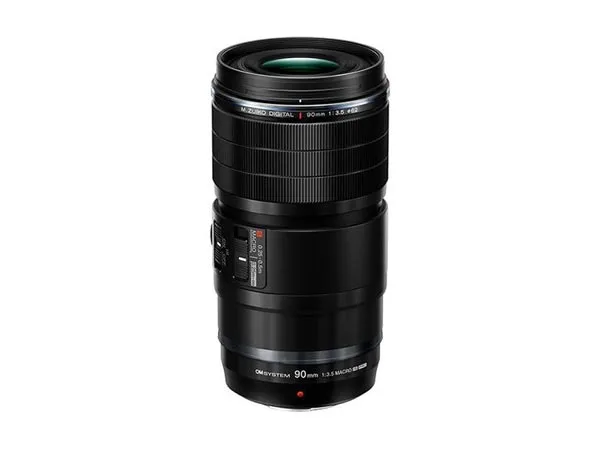
Price Starting at $1799
The OM System 90mm is a very special lens for taking macro pictures. It gives you two times life size. This means a very tiny thing, like an ant’s face, can look very, very big in your picture. It is for people who really love to see the smallest details in the world. This lens is very sharp and makes every little hair on a bug look clear.
The Micro Four Thirds system offers versatility. Miniature world photography captures small details. Infinity focus ensures sharp long-distance shots. Close-up filters enhance magnification. Macro light improves image brightness. Close-up shooting requires precise focus. Pollen is a common macro subject.
Pros
- Industry-leading 2x magnification.
- PRO-level weather sealing.
- Excellent edge-to-edge sharpness.
- Manual focus clutch with display.
Cons
- High price.
- Requires deep macro knowledge.
- Short working distance.
- Very specific use case.
Know More: Canon EF 100mm f/2.8 Macro USM lens delivers sharp close-ups. The Canon EF 100mm f/2.8L Macro IS USM lens includes image stabilization. Canon MP-E 65mm 1-5x f/2.8 Macro Lens is ideal for extreme magnification. The EF 100mm f/2.8L IS USM lens offers versatile macro performance.
EF-M 28mm f/3.5 Macro IS STM lens provides excellent detail. The Canon EF 100mm f/2.8 USM Macro Lens is reliable for macro shots. Canon EF 100mm f/1:2.8 L IS USM lens captures stunning macro images. The Canon EF 35mm f/1.4L II USM lens is perfect for low-light photography.
If you are serious about macro, this is a lens you should think about. It is not for Canon cameras directly; you need an adapter to use it. But it is worth it for the best macro pictures.
7. Sigma 105mm F2.8 DG DN Macro Art
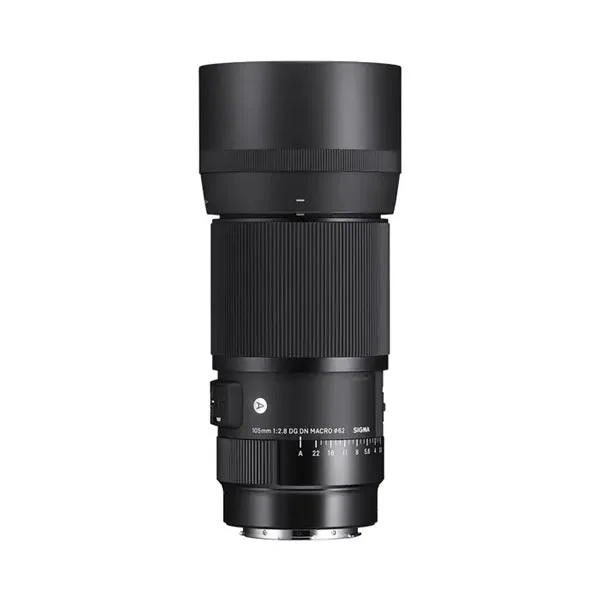
Price Starting at $699
Sigma makes good lenses for Canon cameras. The 105mm Macro Art lens is one of their best. It is a heavy lens, and it feels very strong. The pictures from this lens are very sharp and have nice colors. It is a good lens for taking pictures of flowers and also for taking pictures of people. The blurry background it makes is very smooth and pretty.
Optical image stabilization reduces camera shake. LED lights provide consistent lighting. Auto focus ensures fast subject detection. The full-frame camera captures high-quality images. APS-C sensor offers a compact design. Full-frame sensor delivers superior image clarity.
Pros
- Razor-sharp 1:1 macro.
- Excellent build quality.
- Customizable AFL button.
- Includes aperture ring.
- Well-controlled aberrations.
- Smooth bokeh.
Cons
- Larger and heavier.
- No built-in Optical Stabilization.
- Limited mount availability.
- The autofocus motor can buzz.
This lens is a good price for how good it is. It is better than the lens that comes with the camera. So if you want to take better pictures, you should get this one. It will make your photos look more professional.
8. Canon EF-S 35mm F/2.8 Macro IS STM
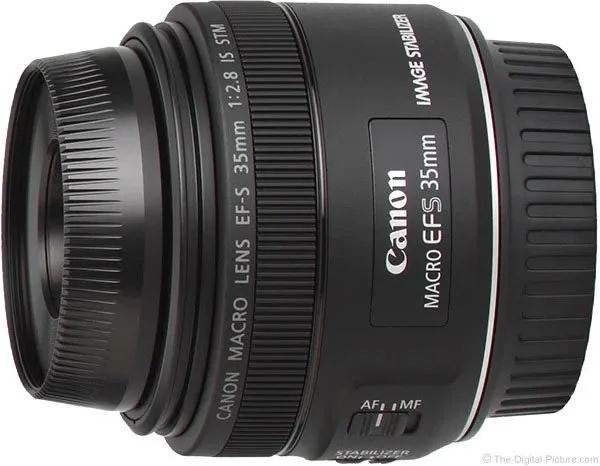
Price Starting at $349
The Canon EF-S 35mm is a fun lens. It has a light on the front of the lens! This light helps you see your small subject when you are very close to it. It is good for cameras like the Canon Rebel. It is a cheap way to start with macro photography. You can take pictures of your toys or your food and see all the details.
In-body stabilisation reduces blur. Zoom macro lens provides flexible focal lengths. Hyper-focal distance maximizes depth of field. Image stabilisation enhances sharpness. Full-frame camera captures detailed images. Street photography captures spontaneous moments.
Pros
- True 1:1 magnification.
- Built-in LED Macro Lite.
- Extremely compact and lightweight.
- Hybrid Image Stabilization.
Cons
- Short working distance.
- EF-S mount limits compatibility.
- Mediocre narrow-aperture sharpness.
- LED color temperature can clash.
Know More: EF 24-70mm lens offers versatile focal lengths. The EF 70-200mm lens provides telephoto reach. Canon RF 100mm f/2.8L Macro IS USM lens captures fine details. RF 100mm f/2.8L IS USM Macro excels in close-up photography. Canon RF 24mm f/1.8 Macro IS STM lens delivers sharp wide-angle shots. RF 35mm f/1.8 IS STM Macro Lens is compact and versatile. The Canon EF-S 35mm f/2.8 Macro IS STM lens is great for crop sensor cameras.
When you use this lens, you can be very creative. You can take pictures of the bubbles in your soda. Or you can take a picture of the sugar on a donut. Because you are so close, you will see things you normally do not see. It is like being an explorer in your own house. This lens is not for professional people, but it is for having fun and learning about macro.
9. Canon RF 100-500mm F4.5-7.1L IS USM
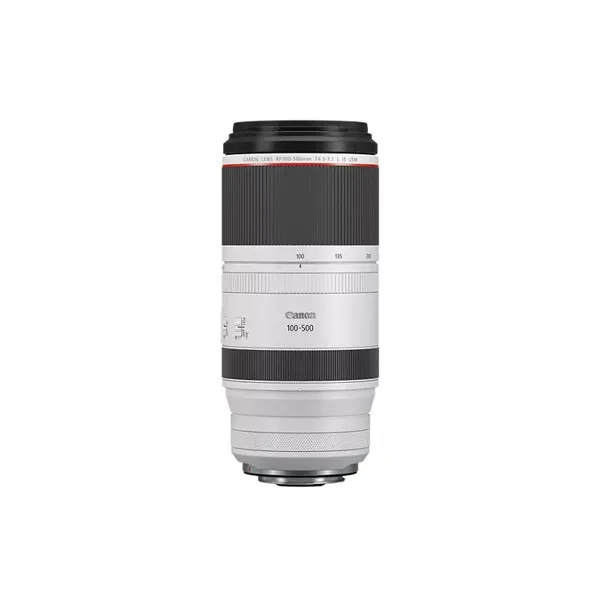
Price Starting at $2899
This lens is a super zoom lens. It can zoom from 100mm to 500mm. That is a very long zoom. You can take pictures of the moon with this lens! And it can also do macro. It is not a true macro lens, but it can focus close enough to take good pictures of small things from far away. This is good for taking pictures of a dragonfly on a pond without scaring it.
This lens is very expensive and big. It is for people who like to take pictures of wildlife and also want to do macro sometimes. It has very good Image Stabilization so you can take pictures without a tripod even when you are zoomed all the way in.
Pros
- Superb L-series image quality.
- Impressive compact zoom range.
- L-series weather sealing.
- Fast silent Dual Nano USM.
Cons
- Slow f/7.1 aperture at 500mm.
- High price.
- Incompatible with teleconverters.
- Long zoom ring turn.
Reverse lens adapters allow macro photography. A ring light provides even illumination. The bokeh control ring adjusts the background blur. Weatherproofing protects gear in harsh conditions. Autofocus range limiter optimizes focusing speed. Photo and video applications benefit from versatile lenses. Tilt Shift Lens offers perspective control.
Know More: RF 85mm F2 Macro IS STM Lens offers versatile macro capabilities. Canon RF 50mm delivers sharp images. RF 50mm lens excels in low-light conditions. Canon MP-E 65mm Macro Lens captures extreme close-ups. The Canon EF 135mm f/2L USM lens produces stunning portraits. EF 135mm provides excellent background blur. The EF 8-15mm lens offers wide-angle flexibility. The EF 35mm lens is ideal for street photography.
10. Canon RF 24-240mm F4-6.3 IS USM
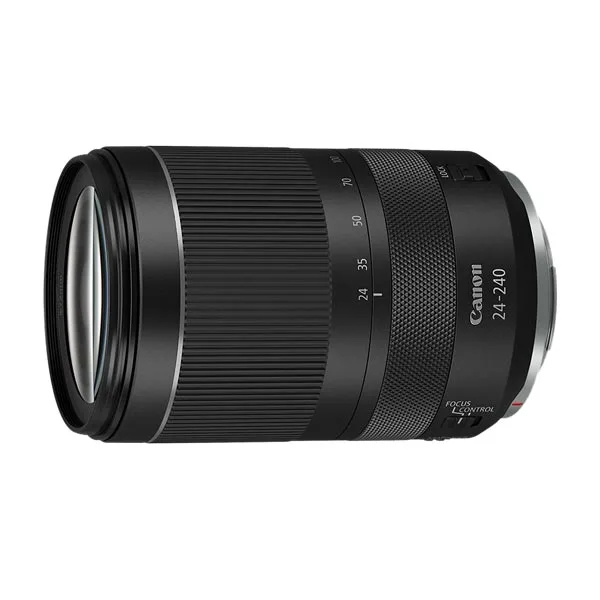
Price Starting at $1049
This is a travel lens. It can zoom from wide to very far. You can take it on vacation and take pictures of the whole mountain and then take a picture of a small shell on the beach. It is one lens for all your pictures. It is good for people who do not like to change lenses.
Focus-by-wire allows precise manual focus. Autofocus capabilities ensure fast subject tracking. Sensor size affects image quality. Dual Pixel CMOS AF II enhances focus accuracy. User-friendly interface simplifies camera settings. Tilt-shift lens corrects image perspective.
Pros
- Exceptional 10x zoom range.
- Fast quiet Nano USM.
- Relatively light and compact.
- Effective 5-stop Image Stabilization.
Cons
- Heavy digital correction reliance.
- Modest maximum aperture.
- No weather sealing.
- Soft edges at telephoto.
Content creation thrives with versatile gear. The vintage look adds nostalgic charm. Character enhances image uniqueness. Weather resistance ensures durability. Filter size impacts lens compatibility. Rainbow flare creates artistic effects. Sensor coverage improves image clarity. EOS R5 II offers advanced features. Canon DSLR Camera delivers exceptional quality.
FAQs
What is the best Canon macro lens for insects?
The Canon RF 100mm F2.8L Macro IS USM is often the best Canon macro lens for taking pictures of bugs. This lens has a life-size magnification of 1.0x and is very sharp, making it great for getting close-up shots of insects. When you’re out in the field, where lighting can be unpredictable, ‘s built-in image stabilization also helps.
Which Canon macro lens is ideal for close-up photography?
The Canon EF 100mm F2.8L Macro IS USM is a great lens for taking close-up pictures. It has a hybrid IS system that lets you take amazing close-up shots with very little blur. The image quality is also very good. It can also be used for both macro and portrait photography.
What is the best macro lens for Canon RF?
One of the best macro lenses for Canon RF mount cameras is the Canon RF 100mm F2.8L Macro IS USM. With a 1.4x magnification, you can see more details, which is great for getting textures and fine details in your subjects. The RF lens design also helps the lens by making it autofocus faster and making it smaller.
Is there a cheap macro lens for Canon cameras?
The Canon EF-S 60mm F2.8 Macro USM is a great choice if you want something that won’t break the bank. Even though it’s cheaper, it still has great image quality with a 1:1 magnification ratio. It’s a great option for those starting with macro photography without breaking the bank.
Final Thought
Getting a macro lens is a good idea for your Canon camera. We hope this list helps you find the right macro lens. Taking macro pictures is a very fun hobby. It makes you slow down and look at the world more carefully. You will be surprised at all the amazing things you can find when you start looking close. So get a lens and start your macro adventure today.
It’s important to choose the right design partner, just like it’s important to choose the right macro lens for your Canon camera. At Zenith Clipping, we focus on offering high-quality, precise graphic design services that make your ideas stand out.


